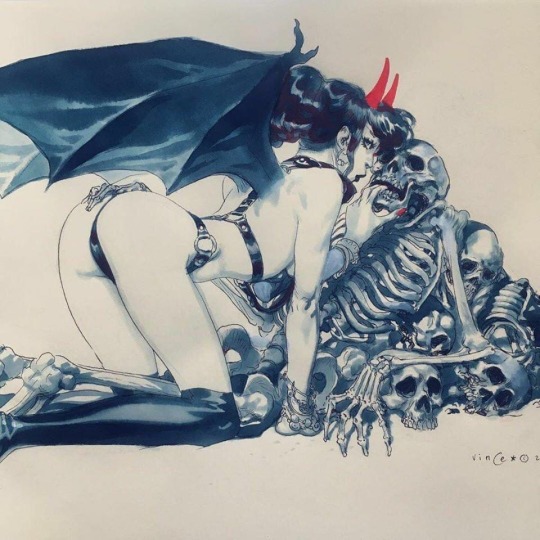Text
| What to Learn as a Beginner Witch |
If you are a beginner, it is essential to prioritize learning about protection. This involves understanding different methods and spells that can be used to safeguard yourself from negative energies, harmful entities, and other potential sources of danger. Some common forms of protection include grounding, shielding, and invoking protective deities or spirits. It is important to take the time to research and experiment with different approaches to find the ones that work best for you. Remember, your safety always comes first.
Start with beginner-friendly options like candle spells. They are easy to perform and require minimal supplies. Avoid jumping into complex spells that can backfire if not performed correctly. Before attempting more advanced spells, gain a solid understanding of magical principles and energy work.
Learn your elements
Learn about color correspondences and their significance in spiritual practices. Different colors correspond to different energies, emotions, and meanings. Discover how to use their power to enhance your craft.
Learn how to cast a circle for rituals and spellcasting.
Learn your herbs and crystals and how to use them in spellwork and rituals.
Learn about the significance of moon phases in magic. Many witches align their spells with specific lunar energies.
#divination#fyp#grimoire#witchblr#witchcraft#baby witch#broom closet#witchcraft 101#paganism#magick#witchcraft community
147 notes
·
View notes
Text
Beginner Friendly Witchraft Books
With a plethora of information available, it's essential to find the right resources to guide you through your magical path. Here are some books I would recommend to any beginner that offer a solid foundation into various paths and topics.
Witchery by Juliet Diaz
The book is a mix of personal experiences, practical instruction, and spiritual guidance, making it suitable for both beginners and people with more experience in the craft.
The Crooked Path by Kelden
This book has been an invaluable resource in my personal craft. It explores various aspects of traditional witchcraft, which if you're interested in I would definitely recommend.
Psychic Witch by Matt Auryn
This book is for anyone curious about the unseen world and their own untapped potential.
Green Witchcraft by Paige Vanderbeck
This is a guide to practicing green witchery, harnessing the natural world's magic for growth, healing, and living in harmony with nature.
Witchcraft for Beginners by Lisa Chamberlain
A pretty informative guide to witchcraft with brief but thorough descriptions of different paths.
Cunningham's Encyclopedia of Magical Herbs by Scott Cunningham
A classic book on magickal herbs
Sigil Witchery by Laura Tempest Zakroff
A comprehensive guide to sigil magick, focusing on helping you develop your own powerful sigil magick practice.
The Witch's Altar by Jason Mankey and Laura Tempest Zakroff
The witch's altar history, creation, and magical power to elevate rituals and connect with the sacred.
These are just ones I've personally found helpful when I first got into the craft, if you want any recommendations for specific topics feel free to ask :).
#divination#fyp#grimoire#witchblr#witchcraft#baby witch#broom closet#paganism#witch community#witchcraft 101#book recommendations#witchcraft books
760 notes
·
View notes
Note
hi, how r u? Hope you doing well
Can I have a reading in general for me (HS) more towards friendship and relations
Thanks 🙏
Hey^^ i currently don't have my cards with me but i can do one if you're still interested when i have them
0 notes
Text
Tarot card meanings: ② The High Priestess

Element: Water
Planet: Moon
Zodiac: Cancer♋
Numerology: 2 representing balance, duality, and choices
Yes or No: Yes
Upright keywords: intuition, divine feminine, balancing opposites, wisdom, mystery
Upright meanings:
‣ A sign to follow your intuition
‣ Hidden knowledge
‣ Hidden emotional depths
‣ Balancing opposites
Reversed keywords: cognitive dissonance, secrets, withdrawal, repressed intuition, imbalance
Reversed meanings:
‣ Disconnected from intuition / Ignoring intuition
‣ Hidden secrets
‣ Lack of insight
‣ Difficulties maintaining balance
#tarot cards#daily tarot#tarot card meanings#the fool#upright#reversed#divination#ethereal visions tarot#tarot#tarotcommunity#tarot readers of tumblr#fyp#witchcraft#witchblr#grimoire#magick#baby witch#witchery#witchcraft 101#spirituality#broom closet
21 notes
·
View notes
Text
- A guide to lunar magick -
Today's topic is moon magick and how you can harness the moon's power to enhance your spiritual journey.

As I delve into the various phases of the moon, we'll go over the symbolism, spells, and rituals associated with each, and hopefully offer a deeper understanding of how to align your craft with the moon's cycles. It's important to note that these symbolisms may vary among different crafts, so you might find it doesn't align with your personal practice, so work with it however it feels right for you.
New Moon
The new moon marks the beginning of the lunar cycle, positioned between the Earth and the Sun, appearing completely dark. It symbolizes rebirth and new beginnings and makes for a perfect time for personal growth and reflection. This phase is ideal for magical practices focused on personal transformation, intention-setting, releasing, healing, and anything to do with something new.
Waxing Crescent Moon
The waxing moon is associated with the growth and amplification of energy. It corresponds to the strengthening of intentions set during the New Moon, as desires begin to gather momentum. This time of the moon is also good for setting intentions, as well as harnessing the energy of growth, abundance, and positive change.
First Quarter Moon
Appears approximately 7 days after the new moon. During this phase, the moon is half-illuminated and marks a period characterized by facing obstacles, decision-making, and creating forward momentum. It's a good time for taking action on your intentions and moving forward with your plans, as well as building courage and drawing things in.
Waxing Gibbous Moon
During this phase, the moon's luminance gradually increases and marks a time for attraction and drawing things in, but more often for inner strength and motivation. It's a good time to work on refining your goals and strengthen your focus in various aspects of your life apart from the spiritual.
Full Moon
The full moon is regarded as a time of heightened energy and magic. It occurs about 15 days after the New Moon when it's centered between the Earth and the Sun. This phase is often said to bring in the strongest energies and is often associated with prosperity and fulfillment of intentions. Due to its heightened power during this phase, it's a good time for practicing any spell you have in mind, such as romantic rituals, abundance and prosperity spells, divination, protection and banishing, healing, etc.
Waning Gibbous Moon
The waning gibbous occurs after the full moon, and during this time, the moon's illumination gradually decreases. This phase is good for releasing negative energies and anything that no longer serves you as well as cleansing, divination, reflection, and breaking bad habits.
Third Quarter Moon
The third quarter moon appears in the lunar cycle between the full moon and the new moon. During this phase, the moon is illuminated to roughly half its capacity, presenting as a distinct half-moon shape. This moon's energy is associated with letting go of the past and focusing on reflection and renewal. It's a good time for banishing, protection and warding, and inner exploration including shadow work. It's also a good time to reconnect with spirit.
Waning Crescent Moon
This phase represents the final stages of release and introspection. It calls for the preparation of new beginnings and is a good time for intuitive work and shedding old skin before transitioning into the dark moon.
The Dark Moon
The dark moon occurs when the moon is completely concealed from sight for a few days before the first slight glimpse of the waxing phase and is not actually associated with the new moon. This is a good time to do banishings, hexes, cleansings, bindings, and any magical workings that are considered to be on the negative aspects.
#divination#grimoire#witchblr#witchcraft#baby witch#broom closet#lunar magic#moon magic#fyp#paganism#rituals#witchcraft 101#witch community
786 notes
·
View notes
Text
Witchcraft 101: Wicca & The Wheel of The Year
Paganism - An umbrella term for many nature-based and polytheistic spiritual traditions. Note that not all pagans practice witchcraft.
Wicca - A pagan, nature-based religious movement. Wicca blends aspects of witchcraft, nature veneration, and ceremonial magic. It places a strong emphasis on honoring nature and follows a duotheistic belief system often known as the Triple Goddess and Horned God.
Wheel of The Year
The wheel reflects the cyclical nature of life, death, and rebirth in the natural world and is central to the rituals, spells, and celebrations of many pagan and witchcraft traditions. The Wheel of the Year is divided into eight significant points, which correspond to the Sabbats or festivals:
Samhain (October 31st): Also known as All Hollow's Eve, marks the beginning of the Wheel of the Year and is associated with the end of the harvest season and the onset of winter. Samhain is a time for honoring ancestors, reflecting on mortality, and recognizing the thinning of the veil between the physical and spirit worlds. Samhain is a time to acknowledge the cyclical nature of life and death and to connect with the spiritual realm.
Yule (Winter Solstice, typically around December 21st): Marks the rebirth of the sun, with a focus on light, hope, and renewal during the darkest time of the year. Yule customs include lighting candles or a Yule log, feasting, gift-giving, and spending time with loved ones. It's a significant part of the Wheel of the Year, emphasizing the cyclical nature of life and the changing seasons.
Imbolc (February 1st): Marks the early signs of spring and the gradual return of light and warmth. Imbolc is associated with the Celtic goddess Brigid and is a time for purification, cleaning, and preparing for the coming season's growth. It's often celebrated with rituals, candle lighting, and dedication to Brigid. Imbolc highlights the theme of renewal and the awakening of life after the winter months.
Ostara (Spring Equinox, typically around March 21st): Marks the arrival of spring, where day and night are in balance. Ostara is a time for celebrating fertility, new beginnings, and the growth of life. It is often associated with themes of rebirth, renewal, and the awakening of nature. Common customs include egg decorating, planting seeds, and celebrating the return of warmth and longer days.
Beltane (May 1st): Celebration of fertility, love, and the union of the goddess and god. Beltane is often observed with rituals, bonfires, Maypole dancing, and other festivities that emphasize the vitality and growth of life in the natural world.
Midsummer (Summer Solstice, typically around June 21st): Also known as Litha, marks the longest day of the year when the sun is at its peak. Midsummer is a time for harnessing the sun's energy, celebrating the abundance of nature, and enjoying outdoor festivities. Common customs include lighting bonfires, dancing, and gathering herbs and flowers for magical and medicinal purposes.
Lughnasadh (August 1st): Also known as Lammas, marks the first harvest of the year and is associated with the Celtic god Lugh. Lughnasadh is a festival dedicated to expressing gratitude for the Earth's bountiful harvest and agricultural abundance. Traditional practices during this time involve crafting corn dollies, enjoying meals made from freshly harvested crops, and engaging in various games and competitions.
Mabon (Autumn Equinox, typically around September 21st): Marks the second harvest and a time of balance when day and night are equal. Mabon is a festival for reflecting on gratitude, giving thanks for the fruits of the Earth, and preparing for the darker months ahead. Common customs include feasting on seasonal foods, making offerings to the land, and creating altars with symbols of the season.
#divination#witchcraft#witchblr#grimoire#magick#baby witch#witchery#witchcraft 101#spirituality#broom closet#fyp#sabbaths#paganism#paganblr#wicca
203 notes
·
View notes
Text
Tarot card meanings: ①The Magician
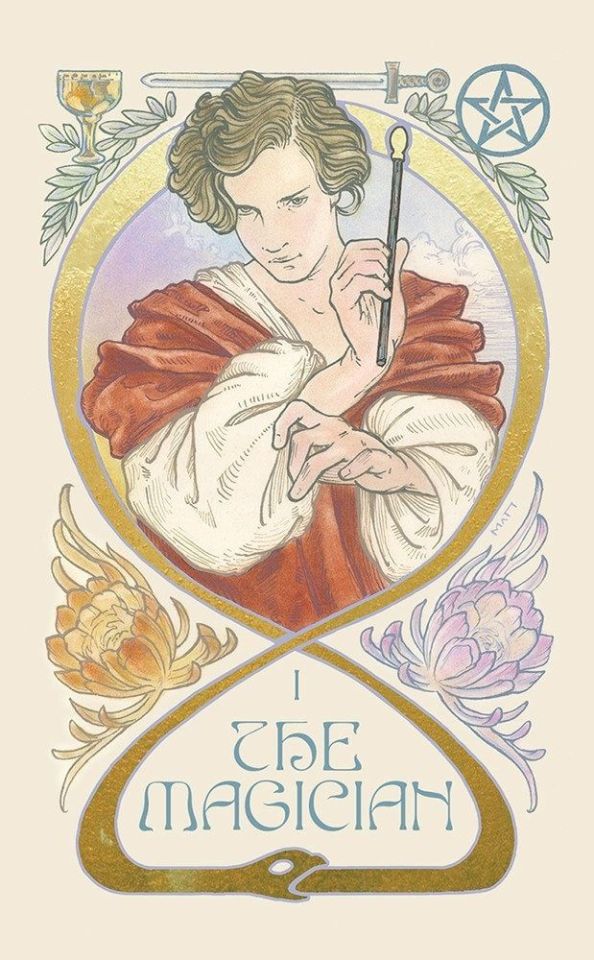
Element: Air
Planet: Mercury
Zodiac: Gemini♊, Virgo♍
Numerology: 1 representing potential, new beginnings and opportunities
Yes or No: Yes
Upright keywords: manifestation, skill, willpower, growth, creation
Upright meanings:
‣ A call to action
‣ Everything you need is at your fingertips
‣ Suggests now is a good time to move forward with plans/ideas
Reversed keywords: poor planning, unused ability, manipulation, conniving
Reversed meanings:
‣ Suggests you're not taking action to manifest your desires
‣ Uncertainty about how you will get something done
‣ Struggling to see progress/feeling unmotivated
#tarot cards#daily tarot#tarot card meanings#the fool#upright#reversed#divination#ethereal visions tarot#tarot#tarotcommunity#tarot readers of tumblr#fyp#witchcraft#witchblr#grimoire#magick#baby witch#witchery#witchcraft 101#spirituality#broom closet
89 notes
·
View notes
Text
- Tarot 101:The Basics -
‣ Tarot is a divination tool consisting of (usually) a deck of 78 cards primarily used for spiritual guidance and tapping into your intuition in order to understand and reflect on what is happening in your life. Tarot has origins dating back to the 15th century, being commonly used as a card game and wasn't introduced as a divination tool until later on around 18th century. Occultists such as Antoine Court de Gébelin and Jean-Baptiste Alliette (known by the pseudonym "Etteilla") authored books that advocated the utilization of Tarot cards as a means of divination and personal exploration.
Rider - Waite Tarot
‣ The Rider-Waite deck is one of the most popular and influential decks,usually recommended for beginners. Arthur Edward Waite collaborated with artist Pamela Colman Smith, both of whom were members of the Golden Dawn, to produce the Rider-Waite deck, which was initially released in 1909.
The Major and Minor Arcana
‣ A standard deck consists of 78 cards, divided into two main categories: Major and Minor Arcana.
The Major Arcana consists of 22 cards representing life lessons, karmic influences and big themes.
The Minor Arcana is made up of 56 cards, divided into four suits: Pentacles (or coins),Cups,Swords and Wands. Each suit has 14 cards, including 10 numbered cards and 4 court cards (Page,Knight,Queen and King).
The four suits
‣ Pentacles - representing the element of earth and are associated with material possessions and the financial aspects of life, but can also signify emotional and spiritual prosperity as well.
‣ Cups - represent the element of water and are associated with the emotional aspects of ourselves. Cups cards often deal with matters of the heart, including love, relationships, emotions, and personal connections.
‣ Swords - representing the element of air and are associated with communication,intellect,conflicts,decision-making etc. They can indicate intellectual clarity or inner turmoil.
‣ Wands - representing the element of fire and are associated with creativity, passion,action and determination. Wands cards are strongly associated with creative endeavors, the pursuit of goals and projects and seizing opportunities.
Numerical association
‣ The numbered cards represent different stages or aspects of the suit's energy. Here's a brief overview:
Ace - The Ace represents potential, new beginnings and opportunities
Two - The Two cards represent balance, duality and choice making
Three - The Threes are associated with growth, expansion and creative expression
Four - foundation, structure, stability, manifestations
Five - challenges, change, instability, conflict
Six - harmony, cooperation, nurturing, balance
Seven - introspection, spirituality, assessment, wisdom
Eight - accomplishment, abundance, action, power
Nine - attainment, fruition, fulfillment
Ten - completion, end of a cycle, renewal
Spreads
‣ The specific layout of the cards is called a spread,where each placement provides an answer to a specific aspect of a question. Some most commonly used and spreads include the three card spread, five card spread and the Celtic Cross.
I'll dive into the individual meanings of the cards in another post but this is pretty much a summary of the basics. Hope it helps :)
35 notes
·
View notes
Text
Tarot card meanings: The Fool's Journey
⓪. The Fool

Element: Air
Planet: Uranus
Zodiac: Aquarius
Numerology: 0 or 22 representing infinite potential and the start of a new cycle
Yes or No: Yes
The Fool card corresponds to the first letter of the Hebrew alphabet which is Aleph(א) and aligns with The Fool's symbolism in the Tarot.
Upright Keywords: new beginnings,innocence,freedom,free spirit,adventure,childlike wonder,risk-taking,spontaneity,leap of faith,frenzy
Upright meanings:
‣ Beginning of journey
‣ Preparing for a leap into the unknown
‣ A return to childlike wonder and innocence
‣ Encourages unconventional approaches and thinking
‣ Free spirited and carefree attitude
‣ Letting go of limiting beliefs or expectations about life/self
Reversed Keywords: recklessness,resistance to change,hesitation,stagnation,rigidity,fear of failure,limited perspective,risk-taking,missed opportunities,impulsivity
Reversed meanings:
‣ A need for caution and consideration before taking risks or making impulsive decisions
‣ Acting too recklessly
‣ Reluctance to embrace new opportunities
‣ Hesitant to follow your intuition or take a leap of faith
‣ Feeling held back/stuck in a rut
‣ Missed opportunities/failure to recognize and seize chances for growth and transformation
#tarot cards#daily tarot#tarot card meanings#the fool#upright#reversed#divination#ethereal visions tarot#tarot#tarotcommunity#tarot readers of tumblr
13 notes
·
View notes
Text
I think we deserve

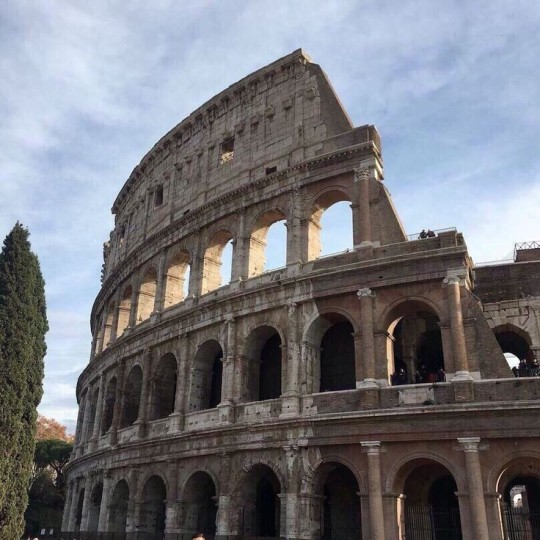

A soft epilogue, my love



We are good people



And we've suffered enough.
2K notes
·
View notes
Photo
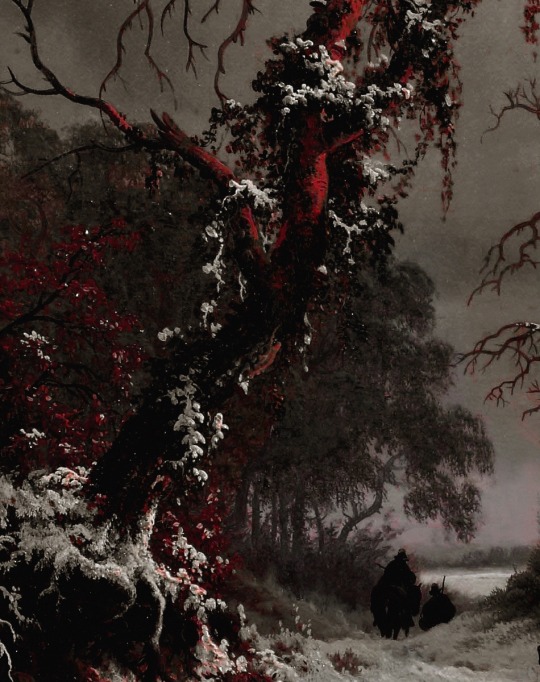

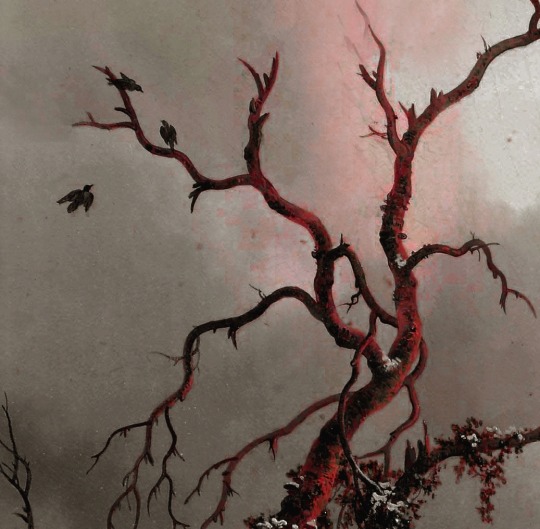

An idyllic winter scene with woodgatherers near a castle (1853)
by Frederik Marinus Kruseman
22K notes
·
View notes





